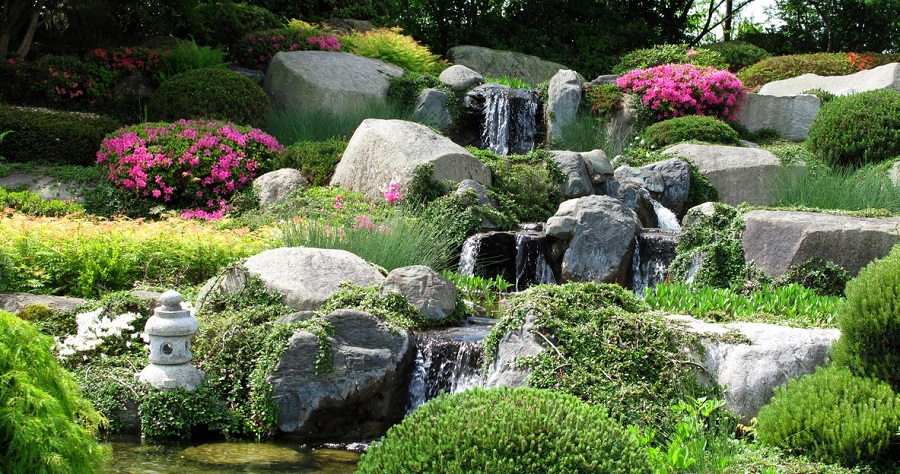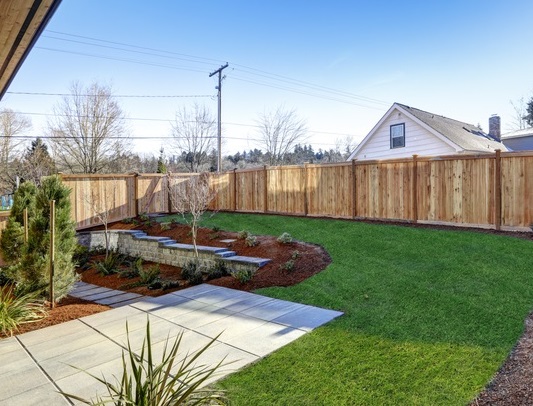How to Landscape a Sloped Garden
Reading time: 4 minutes
Design in zones
Just like you would design the interior of a property with different rooms that serve distinct purposes, you could approach the setup of a sloped garden as a series of ‘rooms’ too.
By having clear-cut zones around an outdoor space, property owners will easily be able to dedicate areas to socialising, relaxing and enjoying recreational activities.
Creating zones around a garden also has the added benefit of making a small outdoor space appear larger, as well as increasing interest throughout expansive exterior surroundings where some parts can become neglected otherwise.
Introduce a patio or deck into a garden
One of these established zones should be used to create a decking or patio area, for the following reasons:
1. A deck or patio is a great place in a garden for property owners to entertain family and friends.
2. The style of a deck or patio can be designed in a way that will complement a property’s interior.
3. This section of a garden can look natural with the use of timber decking boards.
Another great aspect of a decking or patio area is that you can build it virtually anywhere around an outdoor space.
Place it at the top of a garden and property owners will be able to relax and look out across the rest of their property’s exterior surroundings, for instance. Put this feature at the bottom of the garden though and a secluded retreat can be established.
Once you have decided where a patio or deck is going to go, be sure to read our handy guides on arranging patio paving slabs and how to build raised decking for many more helpful tips.
It is also important to mention planning permission when you are looking to add decking or a patio area to a garden. While unlikely to be needed for many projects, this will be required when:
-
The development is more than 30cm above ground level.
-
It covers over 50% of a garden area.
-
It is being built in a conservation area.
Property owners should check with their local planning authority if they are unsure if planning permission is required before starting the project.
Embrace water features
Inclines or tiered levels in a garden are perfect for allowing landscapers to incorporate peaceful and elegant water features into a property’s outdoor space.
A route can be built going along the sloped garden that can replicate a natural stream, or a flowing waterfall created that goes down steep levels for a more dramatic effect.
Depending on the size of the space being worked on, a pond can also be installed at the bottom of the garden. This gives an exit point for a stream or waterfall, as well as helping to attract birds, frogs and other wildlife.

Tap into the Japanese-styled rockery theme
You could reserve another zone of a garden to introduce the natural elegance of Japanese-themed rockery to a space.
A quick way of transforming the corner of a sloped garden, the idea is that stone steps are neatly packed together and linked. This will form layers of texture to a space, as well as enhance a garden’s character.
These stone steps should border a rock pool filled with decorative stones of various sizes, with some soil left untouched for property owners to place low-growing plants.
Bring zones together using retaining walls and steps
After each zone of a sloping garden has been set out, the next stage will be to bring each area together so that they do not look too isolated.
Use retaining walls so that you can work on areas at different heights. These features will make parts of a garden easier to access too, as well as reducing the risk of landslips occurring.
If a retaining wall is built with coping stones, they can also be used as additional seating options.
Steps are another way of establishing a brilliant transition between one zone of a sloped garden and the next.
Just make sure that a set of garden steps are designed so that they gradually work their way up or zigzag around a slope though, to avoid them being difficult to climb due to being too steep.
With these tips, landscaping a sloping garden should become much less of a challenge. To further improve a property’s exterior surroundings that you’re working on, don’t forget to also check out our guide on what you need to know about outdoor lighting.




